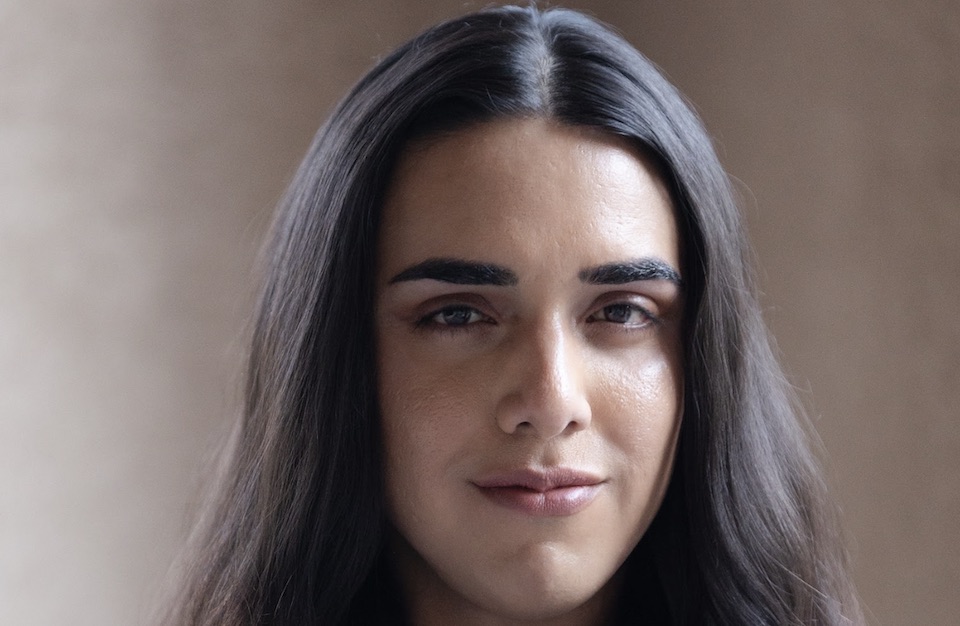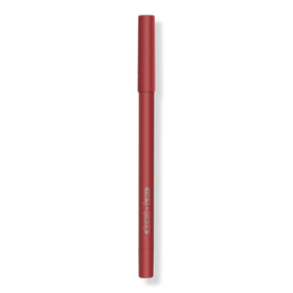
Now in its second year, the initiative was created by Daniella Carter—a producer, motivational speaker and LGBTQIA+ advocate—in collaboration with creative agency SpecialGuest.
Rox, who identifies as a non-binary trans femme and uses the pronouns they/she, was thrilled when they learned Shipping Them was one of six films chosen by Daniella’s Guestbook for this edition—and even more excited when they realized exactly who Carter is.
At first, “I didn’t realize it was a showcase curated by the Daniella Carter from one of my favorite movies of the year, Kokomo City,” Rox says. Kokomo City, a documentary directed by D. Smith, premiered at the Sundance Film Festival earlier this year. In it, four Black trans women share their experiences as sex workers. Carter also appeared in the MTV documentary Laverne Cox Presents: The T Word.
Rox met Carter recently at a showcase for the Daniella’s Guestbook films in New York. They also received a cash prize and were interviewed about their work by GLAAD CEO and president Sarah Kate Ellis.
“Not only do I feel like I’ve finally found a community I fit in with, I feel celebrated and platformed, which is a rarity in this business,” says Rox, who has made a handful of short films in the last few years. Their upcoming feature film, Hidden Flora, is in post-production.
One of the goals of Daniella’s Guestbook is to open the doors of employment in the advertising and creative industries for underrepresented creators and talent. Rox has yet to work in the ad arena. “But I’d be open to directing for brands in short-form work,” they enthuse.
Born and raised in El Paso, Texas, and now residing in Las Cruces, N.M., Rox explains how they made Shipping Them, which they wrote, produced, directed and starred in, and talks about why it’s important for people in the LGBTQIA+ community to tell our own stories.
Can you tell me where the idea for Shipping Them came from?
The idea for Shipping Them came as a result of needing to write something to apply for the Femme Frontera filmmaker grant. [Rox works as the artist support manager at Femme Frontera, an organization that fosters the work of marginalized femme and non-binary filmmakers of color from the U.S./Mexico border region.] I decided to write from truth because at this point in my career, I was beginning to realize just how therapeutic filmmaking was. Once I got started, the story just flowed out of me.
The shipping containers, in which the characters live, made for a great location visually. Where did you shoot Shipping Them, and how long did it take?
Shipping Them was filmed in Las Cruces, N.M., and El Paso, Texas, in five days total—three at the shipping containers.
How did you go about assembling the team to make the film?
I assembled my team based on who worked best with us on my first films, but I also made it a point to include queer, femme and non-binary people in the cast and crew.
The girl next door and her boyfriend ride around in a splashy pink-and-blue convertible. Do you have an interesting story behind how you found that car for the film?
I do! I posted on Instagram seeking a pink convertible. The pink-and-blue car owner replied, and it was so perfect because we had already been playing with pink-and-blue in our color story. It worked out better than if I had gotten what I originally wanted. Also, just last week, the car was totaled! The owner is OK, but the car is now in a junkyard somewhere—RIP.
What was the biggest challenge in making Shipping Them?
I think the biggest challenge was directing myself and trying to change outfits, hair and makeup between scenes that we had to film in the same day. Our makeup artist and hairstylist, Naomi Gomez, was brilliant at making me look completely different in minutes.
The split diopter shot was one of the most tricky parts that I knew we had to choreograph just right to work, and even then, we still had to clean it up in post.
I loved the combination of animation and practical effects in that early scene where the girl next door is kissing her boyfriend and a blue sky/clouds screen physically rolls in behind them with the animated birds “pulling” it. I enjoyed the animated touches in general.
Since it was fantastical, I wanted to use multiple mediums. I thought having little touches here and there would differentiate it from others and be a somewhat simple way to add to the whimsy. We made a list prioritizing “must haves” to “can live without” based on the short amount of time we were giving to our animator. But our animator, Paul Lopez, got through the entire list in time. They are so talented and also a non-binary artist.
I just read that your first feature film, Hidden Flora, is in post.
It is! Hidden Flora is an autobiographical queer romantic dramedy that follows Roxii, a non-binary trans femme hopeless romantic, as they reflect on formative past relationships. Roxii, a queer New Mexico high schooler, just wants to be loved and treated the way boys treat girls. A string of boys and men change Roxii’s life, for better or worse, as they discover their gender identity between 2008 and the present day.
I pitched the idea to my friend, Luca Silver, one day in early December. They were immediately on board [to play Roxii]. So, we fast-tracked the process, with almost no money and only two months of pre-production. We filmed seven days in February, then reconvened, crowdfunded, and went back to finish the last seven days in July,
Being a filmmaker involves creativity, of course, but I think you also have to be entrepreneurial to be successful. Is that a quality you possess in addition to being a creative person?
Absolutely. One of the most helpful classes I took was the Business of Acting, which made me realize this business is just that—a business. Therefore, it was easy to take that understanding with me to the directing side of things. I think I am good at juggling both and don’t find it to be a hindrance.
And one last question: Why it is important for queer people to not only be represented onscreen but also get the opportunity to tell our own stories?
A lot of queer people don’t even have the language to be able to label themselves. For me, seeing a non-binary trans femme artist on television was the genesis of the research I did to discover how I identify. In hindsight, queer representation in media is the reason I know who I am today. If that’s not reason enough to go on to create more opportunities for others to have the same “a-ha!” moment I did in 2020, then I don’t know what is.
This post was originally published on this site be sure to check out more of their content.








